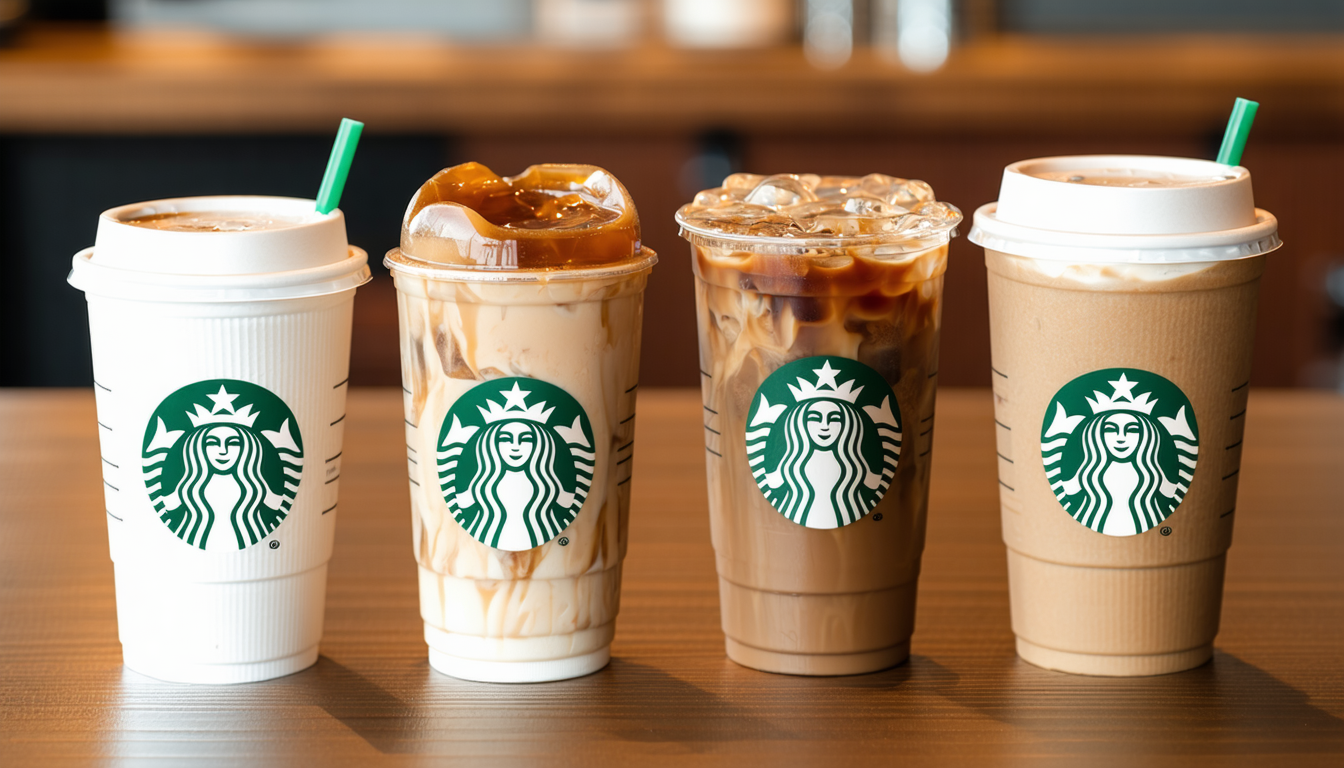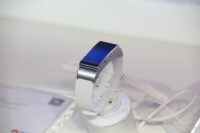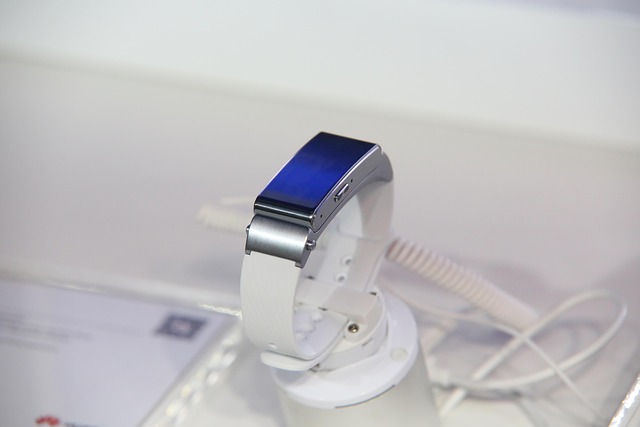Introduction: Navigating Starbucks Drink Sizes in 2025
Walking into a Starbucks, you’re faced with an array of coffee choices—and an equally puzzling lineup of cup labels: Tall, Grande, Venti, Trenta. For many, deciphering Starbucks drink sizes is a recurring frustration. One wrong order can mean too much caffeine, a dent in your wallet, or simply not getting what you expected. In 2025, as the menu evolves and customer expectations rise, understanding these sizes isn’t just about volume—it’s about personalizing your Starbucks experience. This guide clarifies the confusion, empowers you to select the perfect size for any situation, and ensures you never have to guess at the counter again.
What Starbucks Drink Sizes Mean in Modern Coffee Culture
Starbucks drink sizes are not your standard small, medium, and large. The company uses Italian-inspired terms—Tall, Grande, Venti, and Trenta—each corresponding to specific volumes. In the U.S. context, these choices reflect Starbucks’s global brand identity and customer demand for variety. Today’s coffee culture values both precision and the experience itself; cup size affects everything from caffeine content to cost.
Why Size Choice Matters for Every Starbucks Customer
Selecting the right Starbucks drink size is more than a technicality. For budget-conscious customers, it impacts value for money. Caffeine-sensitive patrons and health-conscious drinkers use size to calibrate their daily intake. Customization—adding extra shots, syrups, or milk—means that size also shapes your drink’s balance and taste. Understanding the differences empowers customers to make informed decisions that enhance satisfaction and align with their lifestyle goals.
The Starbucks Sizes Framework: Definitions, Volumes, and Best Uses
Starbucks offers a standardized lineup of drink sizes across most locations. Knowing these measurements transforms guesswork into confident ordering.
The Iconic Sizes, Explained
-
Short (8 fl oz/236 mL):
Once the default, this smallest size is available for hot drinks upon request. It’s ideal for espresso-based drinks or for those limiting their caffeine. -
Tall (12 fl oz/355 mL):
Contrary to its name, Tall is the smallest regularly advertised cup. Suited for a regular coffee or modest latte, it’s perfect for morning routines. -
Grande (16 fl oz/473 mL):
The “medium” in Starbucks language, Grande works for both hot and cold drinks. It strikes a balance between value, volume, and caffeine content. -
Venti Hot (20 fl oz/591 mL) & Venti Cold (24 fl oz/710 mL):
“Venti” means twenty in Italian, but the cold version is larger to accommodate ice. These sizes serve heavy coffee drinkers or those seeking maximum flavor customizations. -
Trenta (31 fl oz/916 mL):
Starbucks’s largest size, offered only for select cold drinks (like iced teas and Refreshers). It’s the choice for long meetings or hot days.
How to Choose: Decision Criteria That Matter
Selecting a Starbucks drink size depends on several practical factors:
- Caffeine Tolerance: A larger size often means more espresso shots or coffee, which can impact your energy and jitters.
- Cost Efficiency: Bigger isn’t always better; sometimes the price increase isn’t proportional to volume.
- Drink Type: Iced vs. hot drinks have different size options—rarely is Trenta available for espresso-based drinks.
- Customization Preferences: More room means more flavor add-ins or milk, impacting taste and texture.
Tools and Metrics: Making Informed Choices
To refine your selection:
- Check Menu Boards: Sizes and prices are displayed clearly on the boards at every Starbucks.
- Ask Baristas: Staff can advise on the best size for both caffeine and taste preferences.
- Use Starbucks App: The mobile app details cup volumes, calories, and customization options for every drink size.
Data and Proof: The Numbers Behind Starbucks Sizing
Key Statistics on Starbucks Drink Sizes
- According to Starbucks’s annual report, over 60% of U.S. beverage sales in 2023 were for Grande and Venti sizes—showing a trend toward larger beverages (Starbucks, 2023).
- Customer surveys reveal that 75% of patrons feel more satisfied when they understand the differences between drink sizes before ordering (National Coffee Association, 2024).
- Research indicates that drinks in the Trenta size led to a 20% higher rate of beverage sharing among groups, particularly during summer months (Mintel, 2023).
What These Numbers Mean for Starbucks Customers
These statistics highlight several important points. Most people gravitate toward mid-sized or larger drinks, favoring greater perceived value and the ability to customize flavors. In addition, customer satisfaction correlates with transparency around Starbucks drink sizes. This suggests that a little knowledge not only enhances the experience but also reduces post-purchase regret—be it from an unexpected caffeine buzz or an unfinished mega-sized iced tea.
Practical Examples: Selecting the Best Size for Any Situation
Starbucks drink sizes aren’t just theory—they shape real-world coffee routines. Let’s look at two contrasting examples.
Example A: Morning Caffeine Boost
Emily commutes daily and needs her coffee fix, but wants to balance energy and jitters. She orders a Tall Caffè Latte, containing one shot of espresso and 12 oz of steamed milk. This size delivers enough caffeine to kickstart her morning without overwhelming her. Over a month, she saves both money and calories compared to always choosing a Grande.
Example B: Summer Refreshment for Groups
During a July heatwave, Jason buys Trenta Iced Green Teas for his study group. With 31 oz per drink, he splits the beverage with two friends, enjoying hydration and flavor at a lower cost-per-ounce. The Trenta size’s exclusivity to iced beverages fits the context and maximizes convenience.
These examples show how understanding Starbucks drink sizes delivers tailored results—whether for individual caffeine management or group sharing convenience.
Common Mistakes & How to Avoid Them
Despite Starbucks’s clear sizing, mistakes are frequent:
- Assuming Names Translate Directly: Many customers believe “Tall” means large, leading to surprise when they receive a modest cup.
- Ignoring Drink Type Limitations: Ordering a Trenta espresso or cappuccino isn’t possible; this size is reserved for specific cold beverages.
- Equating Price with Value: Up-sizing for a few cents might lead to wasted drink or excessive caffeine.
- Neglecting Customizations: Failing to adjust syrup, milk, or shots to match a larger size may result in diluted flavors.
To avoid these pitfalls, always check the size menu, confirm availability for your drink, and consider adjusting your customization as the cup grows.
Implementation Checklist: Mastering Starbucks Sizes
- Know Your Drink: Identify if you want hot, cold, espresso, or tea—size availability may differ.
- Review the Menu: Check available sizes for your chosen beverage on the store board or app.
- Ask About Size-Specific Caffeine: Request the number of espresso shots or caffeine per size if relevant.
- Consider Your Goals: Weigh cost, calories, and caffeine needs before defaulting to the largest cup.
- Customize Thoughtfully: Adjust syrup, milk, or espresso shots in proportion to your size choice for optimal taste.
- Order with Confidence: Specify both drink and size clearly to minimize mix-ups.
Conclusion: Demystifying Starbucks Drink Sizes for Every Customer
Mastering Starbucks drink sizes isn’t just a matter of memorizing names—it’s about making intentional choices that fit your budgets, preferences, and routines. Whether you’re a daily commuter, a casual drinker, or buying for a group, knowing the nuances behind each size puts you in control. By applying the strategies, data, and real-world examples shared here, you’ll avoid common surprises and consistently get more from every visit. Next time you step to the counter or open the app, you’re prepared to order the Starbucks drink size that matches your needs—every time.
FAQs
What are the main Starbucks drink sizes in 2025 and how much do they hold?
The primary Starbucks drink sizes are Short (8 oz), Tall (12 oz), Grande (16 oz), Venti Hot (20 oz), Venti Cold (24 oz), and Trenta (31 oz, cold only). Each caters to different preferences for volume, caffeine, and customization.
Why does Starbucks use Tall, Grande, and Venti instead of small, medium, and large?
Starbucks employs Italian terminology to convey a unique brand identity and elevate the coffeehouse experience. This system sets Starbucks apart and invites customers to participate in a global coffee culture.
Is Trenta available for all Starbucks drinks?
No, the Trenta size is only offered for select cold beverages, such as iced teas and Refreshers. It’s not available for hot coffees or espresso-based drinks due to drink preparation and taste considerations.

How do I choose the right size if I’m watching my caffeine intake?
Review the caffeine content for each size on the Starbucks app or ask your barista. Smaller cups usually contain fewer espresso shots, making them suitable for those seeking a lighter caffeine dose.
Does the price per ounce improve with larger sizes?
While larger sizes often offer lower cost per ounce, the value depends on your ability to finish the drink and enjoy its intended taste. Consider your personal consumption and satisfaction when choosing a size.
Can I customize my drink for any Starbucks cup size?
Yes, customizations like extra shots, milk types, and syrup amounts are available for every size. It’s important to adjust flavors in proportion to the cup’s volume to maintain your drink’s balance.












Leave a comment